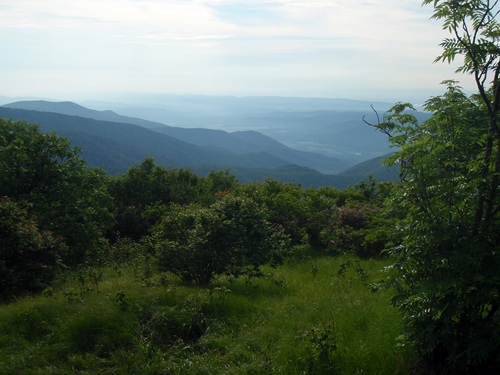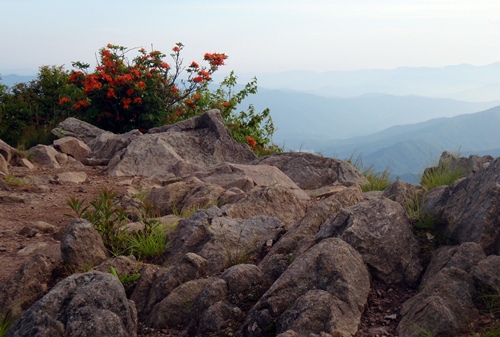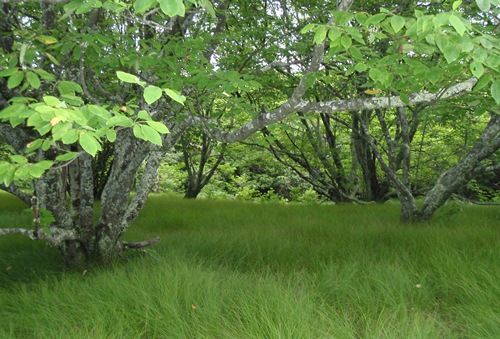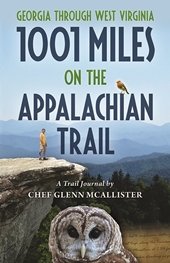Double Spring Gap Shelter to Spence Field Shelter, 13.5 miles
JUNE 15
The deer grazed in front of the shelter again in the morning. The sky was dazzling blue and fresh at the high elevation. Chipper gave me freeze-dried blueberries, which I added to my oatmeal with peanuts and chocolate. Double Spring Gap Shelter was spacious like the other shelters in the Smokies with a solid-rock fireplace on one side. I lingered past 9:00 a.m. to enjoy the serene morning. Birds flitted branch to branch, signaling their locations with sweet notes.

The first seven miles of the day were level over firm trail with gentle
ups and downs. The steepest ascent was a short one, to Silers Bald,
where I walked across a meadow of green grass, wildflowers, and shrubs
under wispy white clouds. Mountains receded one behind the other,
acquiring lighter shades of smoky blue with distance, until the top of
the last mountain was indistinguishable from the Carolina sky.

Five
miles from Derrick Knob Shelter, where I stopped for lunch, I ascended
steeply to the intersection of heaven and earth at Thunderhead Mountain
and Rocky Top. Rhododendron and flame azaleas bloomed brightly against
the sky—yes, that brilliant sky again—so prominent today. Sandstone
boulders jutted out of sandy soil—cast up from ocean sediment a billion
years earlier. I sat on a weathered rock, tipsy from the mountain air,
marveling at the beauty, not wanting to leave. A sobering thought
entered my mind that my time in the mountains would end in a few days.
I
dawdled the last mile and a half through stands of mature ash and oak
trees. Along the trail, wild hogs had rooted up the soil, looking for
grubs and tubers. I had heard that a ranger had hunted hogs a few nights
before, since hogs are active at night. Nonnative hogs, whose
domesticated ancestors had escaped and gone wild back in settler days,
destroy sensitive vegetation and compete for food with native species,
such as turkeys.

At a flat stretch, a peahen crossed the trail in
front of me. She had chicks nearby and was leading me away from them. I
tried very hard to take her picture, but she outmaneuvered me. Swaths
of wild blueberries and blackberries grew along the trail. The bears
would be happy when the berries ripened. The final approach to Spence
Field Shelter was past short trees widely spaced over waves of tall
green grass.
The shelter was close to a full house. I claimed a
spot along the wall and cooked beef stroganoff for supper. One of the
guests came back from the spring and said there was a bear hanging
around. Needing water, I asked a few campers to walk down to the spring
with me. The bear was still there, but he lumbered farther into the
woods. It was too dark to take a photo of him from a distance. Later, I
was told that park bears might approach a flashing camera rather than
run away. They have learned that humans throw food at them in order to
get a picture. Another story was that some bears in the park try to
catch the rocks that people throw at them, thinking it might be food.
Next Day:
Spence Field Shelter to Fontana Dam Shelter
Previous Day:
Icewater Spring Shelter to Double Spring Gap Shelter
Table of Contents:
Share this page with friends on social media.








